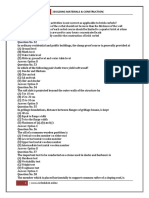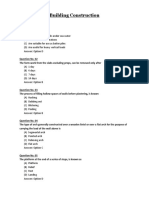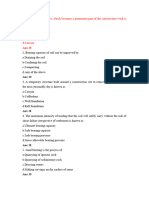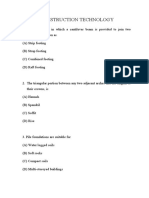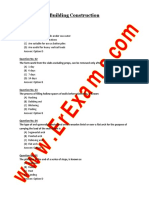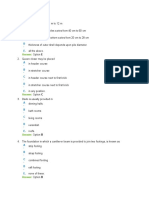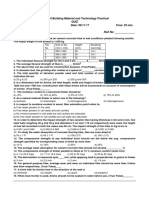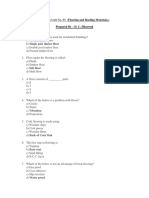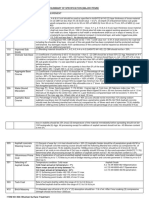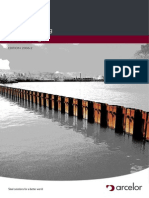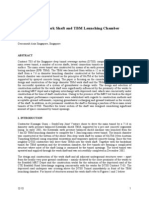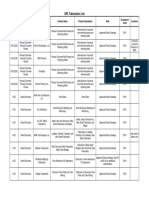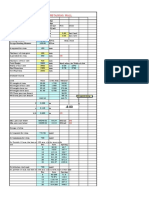0% found this document useful (0 votes)
152 views14 pagesObjective Type
This document contains 43 multiple choice questions related to construction and building materials. The questions cover topics like foundations, piles, bricks, concrete, doors and windows, roofing, scaffolding and formwork. Example questions include the types of foundations used for different soil conditions, parts of buildings like studs and lintels, and sequencing of activities in construction processes like laying a raft foundation.
Uploaded by
Saeed Ahmed SoomroCopyright
© © All Rights Reserved
We take content rights seriously. If you suspect this is your content, claim it here.
Available Formats
Download as PDF, TXT or read online on Scribd
0% found this document useful (0 votes)
152 views14 pagesObjective Type
This document contains 43 multiple choice questions related to construction and building materials. The questions cover topics like foundations, piles, bricks, concrete, doors and windows, roofing, scaffolding and formwork. Example questions include the types of foundations used for different soil conditions, parts of buildings like studs and lintels, and sequencing of activities in construction processes like laying a raft foundation.
Uploaded by
Saeed Ahmed SoomroCopyright
© © All Rights Reserved
We take content rights seriously. If you suspect this is your content, claim it here.
Available Formats
Download as PDF, TXT or read online on Scribd
/ 14


